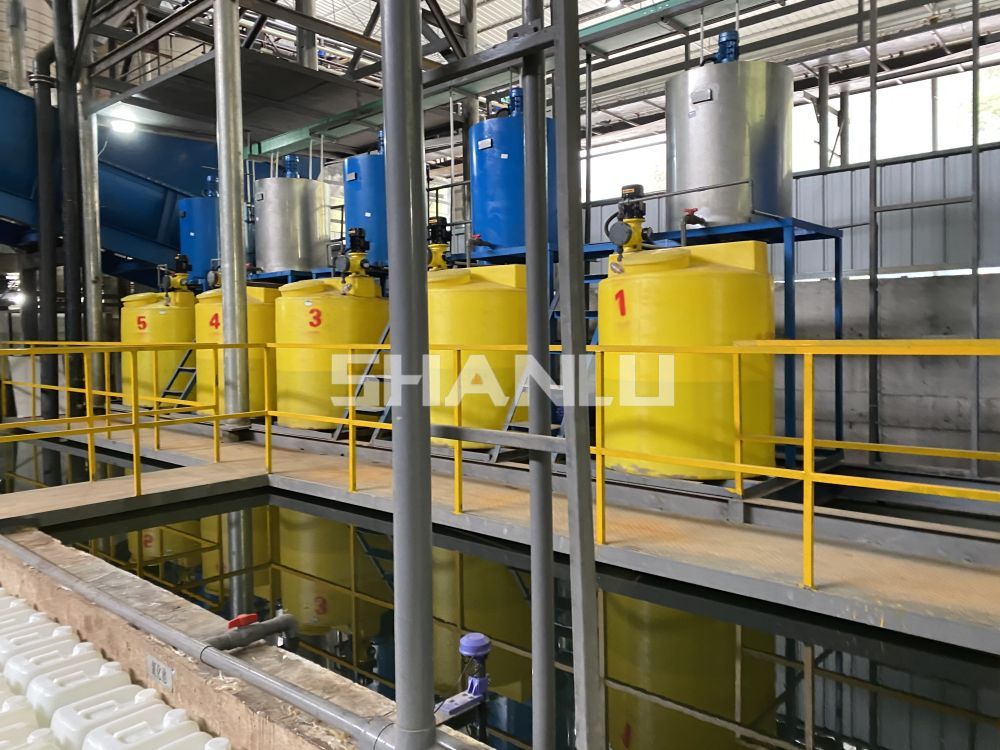Acid washing process of quartz sand and its advantages and disadvantages
1、 Introduction to Acid Pickling Process for Quartz Sand
Quartz sand acid washing treatment is a method of using acid to dissolve and
remove impurities (such as iron, aluminum, titanium, etc.) in quartz sand to
improve its purity and whiteness. Common acid cleaning agents include
hydrochloric acid (HCl), sulfuric acid (H ₂ SO ₄), oxalic acid (H ₂ C ₂ O ₄),
and hydrofluoric acid (HF).
technological process:
Pre treatment: Screening, impurity removal, scrubbing and other pre-treatment
are carried out on quartz sand to remove soil, organic matter and easily
separable impurities attached to the surface.
Acid washing: Soak quartz sand in an appropriate concentration of acid
solution, control the acid concentration, temperature, and time to allow the
acid to fully react with impurities.
Rinse: Rinse multiple times with deionized water or clean water to remove
residual acid and prevent secondary contamination.
Drying: Dehydrate and dry the acid washed quartz sand to obtain high-purity
quartz sand products that meet the requirements.

2、 Advantages and disadvantages of quartz sand acid washing treatment
advantage:
Improving purity: Acid washing can effectively remove impurities such as
iron, aluminum, and titanium from quartz sand, increase SiO ₂ content, and is
suitable for the production of high-purity quartz sand.
Improving whiteness: After removing impurities, the whiteness of quartz sand
increases, meeting the demand for high whiteness quartz sand in the glass,
photovoltaic, and electronics industries.
Strong chemical selectivity: Different acids can selectively remove different
impurity components, improving separation efficiency.
Mature technology: Acid washing technology has been widely used in the quartz
sand industry, with mature process control parameters.
Disadvantages:
Environmental pollution: Acidic waste liquid is generated during the pickling
process, and if not handled properly, it can cause pollution to the
environment.
Equipment corrosion: Acid solution has strong corrosiveness, and long-term
use can cause damage to equipment (such as reaction tanks, pipelines, pumps),
increasing maintenance costs.
Operational safety risks: Some acids (such as HF) have strong corrosiveness
and pose a significant threat to the safety of operators, requiring strict
safety protection measures.
High energy consumption: Acid washing requires a long processing time and
involves heating, rinsing, drying, and other processes, resulting in high energy
consumption.
Not suitable for all impurities: For some impurities that are difficult to
dissolve in acid (such as certain heavy metal oxides or acid resistant
minerals), the removal effect of acid washing is limited.
3、 Optimization and improvement direction
Optimize pickling formula: By combining different types of acids, improve
impurity removal rate while reducing corrosion to equipment.
Waste liquid treatment: Neutralization, precipitation, or recycling
techniques are used to treat waste acid to reduce environmental pollution.
Automated control: Introducing an automated acid washing system to improve
efficiency and reduce safety hazards caused by manual operations.
Alternative processes: Combining other physical or chemical methods such as
ultrasound, mechanical scrubbing, and magnetic separation to improve impurity
removal efficiency and reduce dependence on acid.
4、 Conclusion
The quartz sand acid washing process is an effective method to improve the
purity of quartz sand, suitable for high-end application fields such as
photovoltaic glass and electronic grade quartz sand. However, its environmental
issues, safety risks, and equipment maintenance costs need to be comprehensively
considered. The future direction of technological improvement is to optimize the
pickling process, reduce pollution, improve efficiency, or explore more
environmentally friendly alternative technologies.